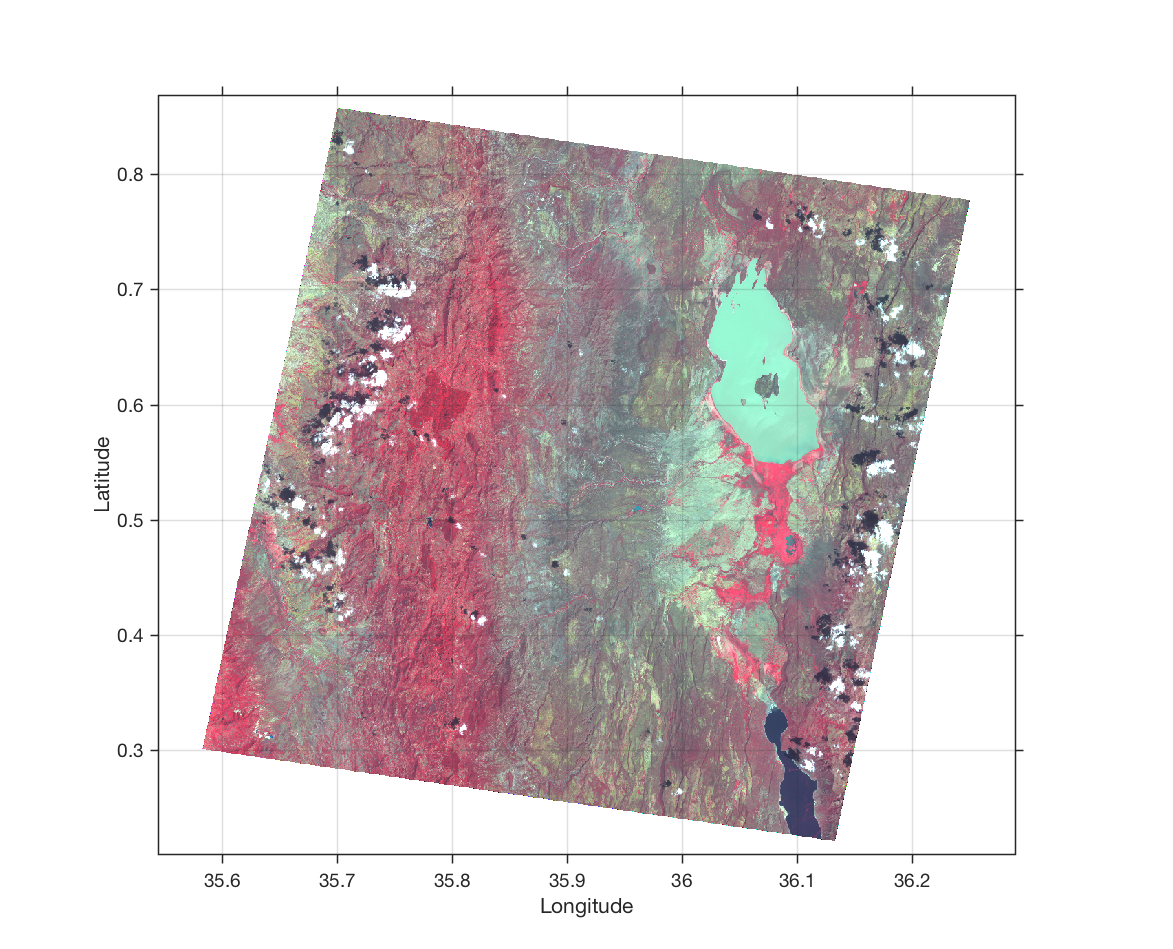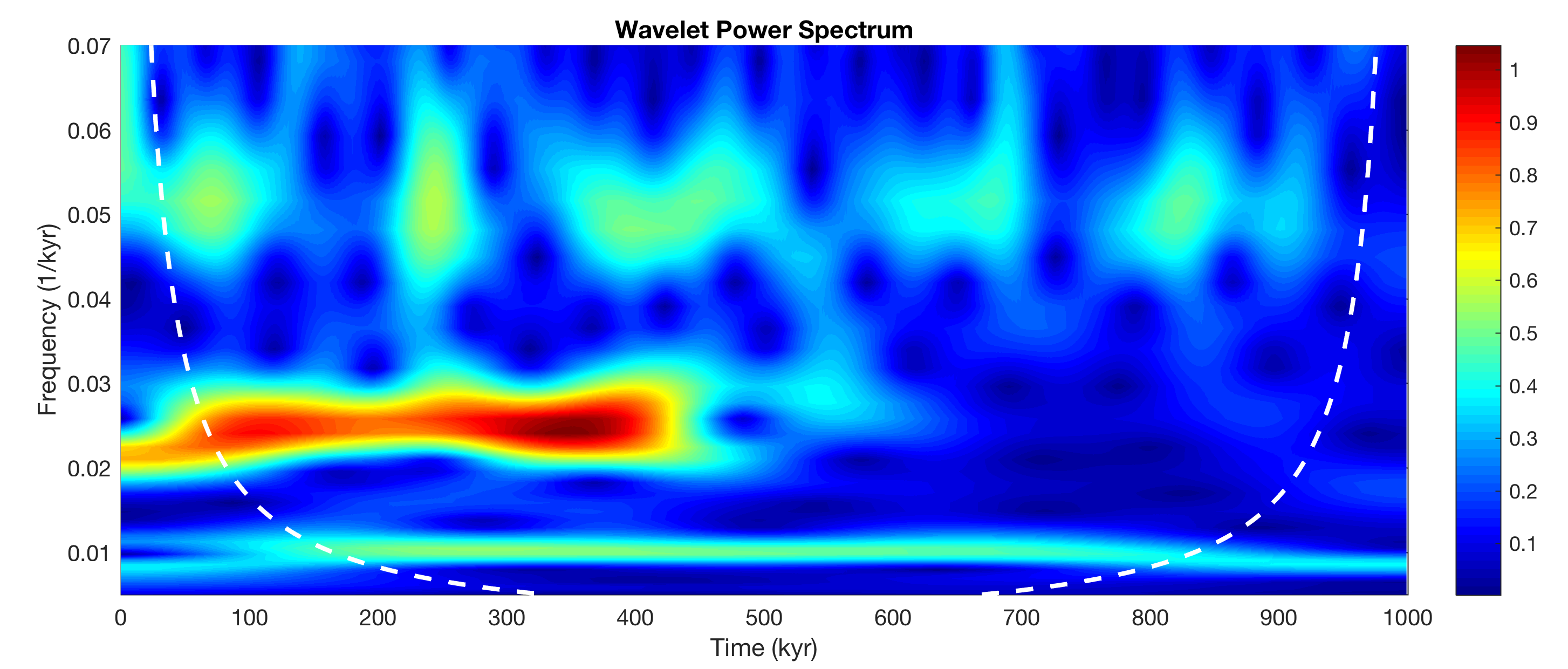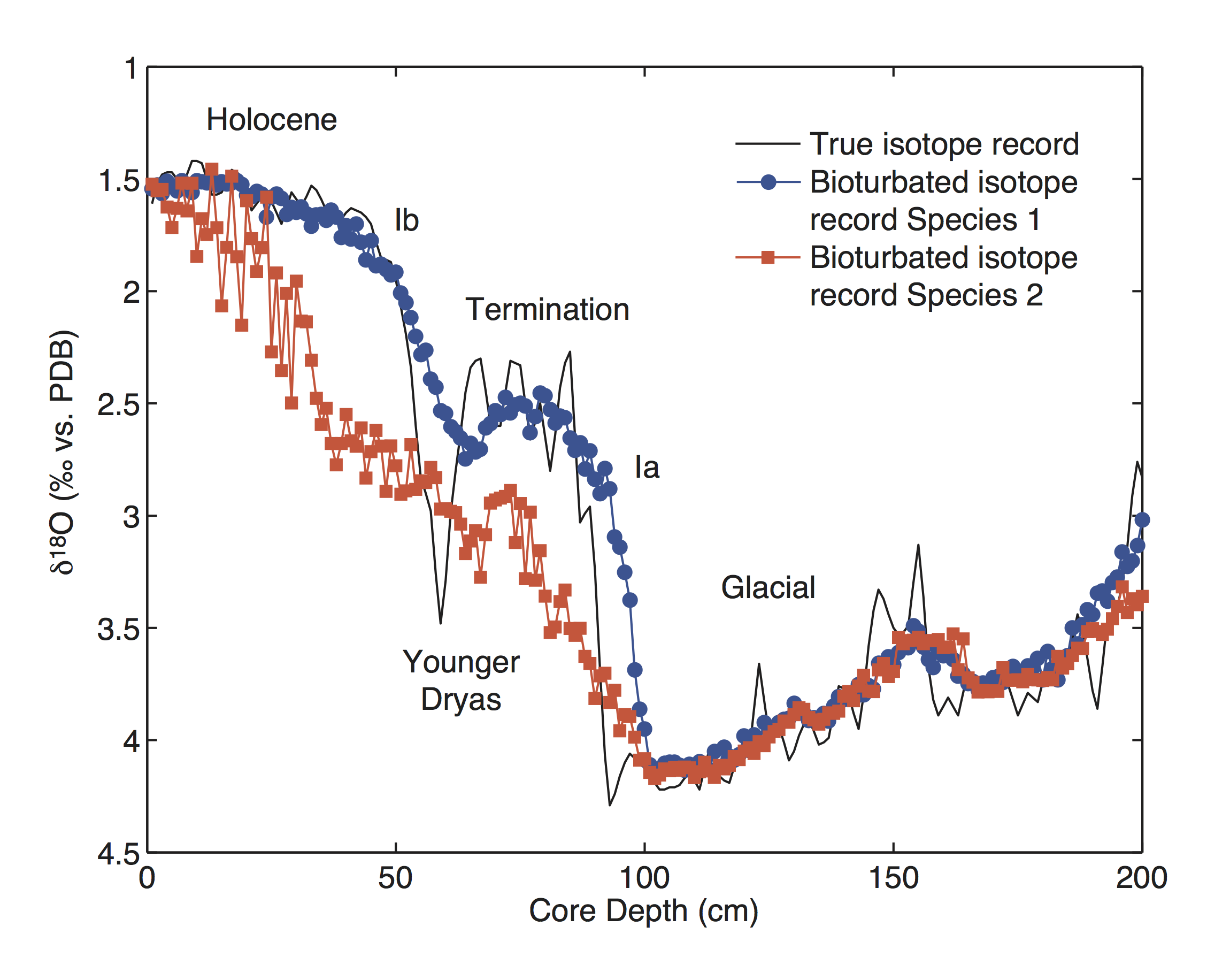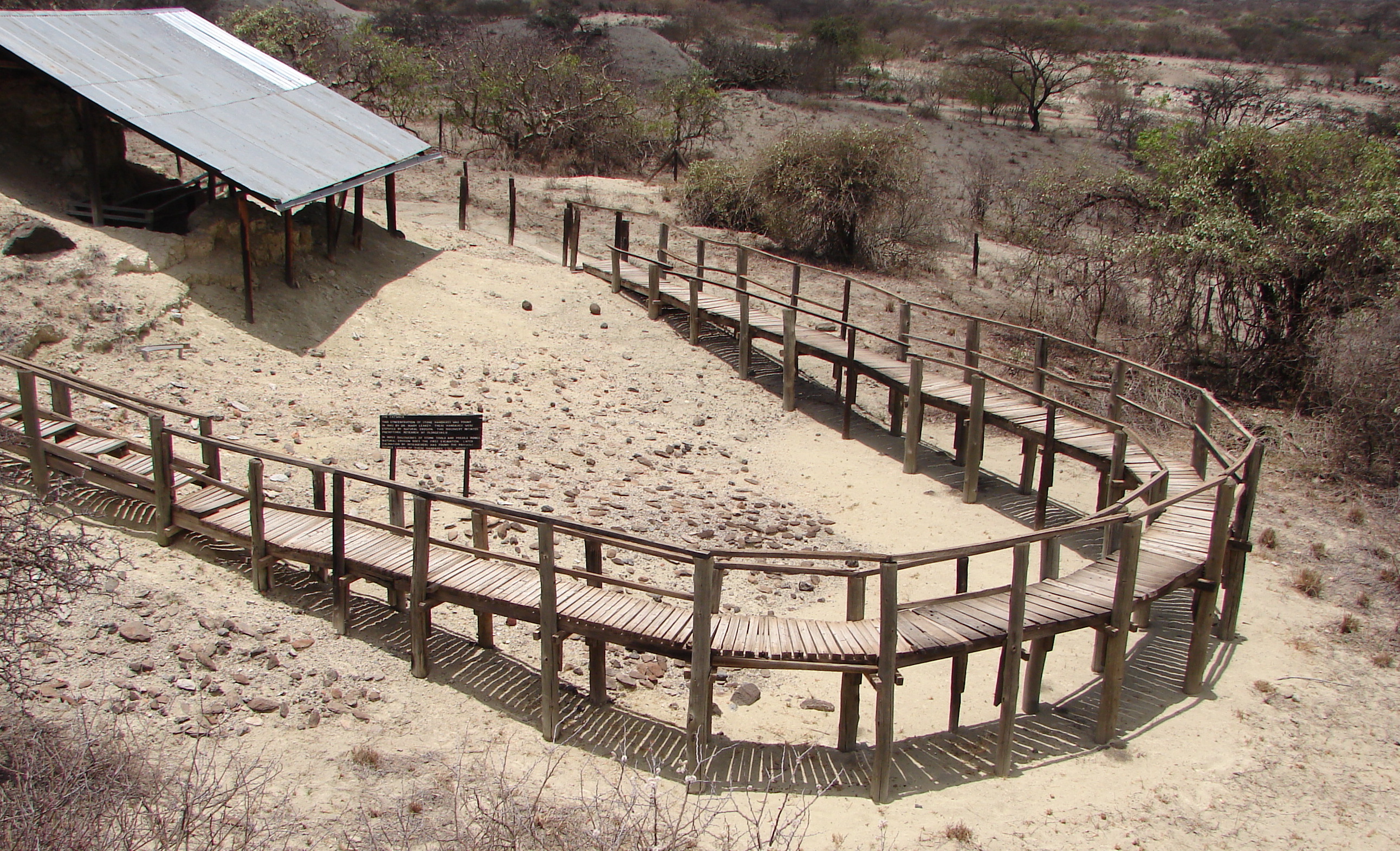Time series of stable isotopes (oxygen, carbon) measured at foraminifers are often very noisy due to the combined effect of low sedimentation rates, intensive bioturbation and small sample sizes (5-20 foraminifers). Adaptive filters may help to increase the signal-to-noise ratio of such time series where conventional methods such as fixed filters cannot be applied if optimal filtering is to be achieved, because the signal-to-noise ratio is unknown and varies with time. Continue reading “Adaptive Filters in Paleoclimatology: Measure it Twice!”
Calculating the Continuous 1-D Wavelet Transform with the new Function cwt, Part 2
After having talked to MathWorks Support I managed to display the cone of influence coi together with the wavelet transform wt. The cone of influence marks the area were edge effects occur in the continuous 1D wavelet transform.
Continue reading “Calculating the Continuous 1-D Wavelet Transform with the new Function cwt, Part 2”
MATLAB-Based Simulation of Bioturbation, Part 1
Bioturbation (or benthic mixing) causes significant distortions in marine stable isotope signals and other palaeoceanographic records. My doctoral project at the University of Kiel between 1992-1995 aimed to model, to quantify and deconvolve the effect of bioturbation in deep-sea sediments. Continue reading “MATLAB-Based Simulation of Bioturbation, Part 1”
41st Shortcourse On MRES
Tomorrow the 41st shortcourse on MATLAB Recipes for Earth Sciences will begin with 29 participants from 12 different research institutions and universities. It is the first of the two spring courses at the University of Potsdam. Continue reading “41st Shortcourse On MRES”
Interactive eBook Edition of MRES
With its fourth edition, the MRES book makes its first appearance as an interactive ebook. This ebook allows the reader to interact with the book and comes in two different formats, with the first being for Apple iPads and Macs (in the form of an .ibooks file created with Apple’s iBooks Author software) and the second being for other platforms (as a PDF file that includes relative links to interactive objects stored on the reader’s hard drive). Continue reading “Interactive eBook Edition of MRES”
Importing and Georeferencing TERRA ASTER Images with MATLAB, Part 1
 Since 1 April 2016 all ASTER data products are free to all users. Here is an example, different from the one described in the MRES book, to demonstrate how to import, enhance and georeference an ASTER image with MATLAB. Continue reading “Importing and Georeferencing TERRA ASTER Images with MATLAB, Part 1”
Since 1 April 2016 all ASTER data products are free to all users. Here is an example, different from the one described in the MRES book, to demonstrate how to import, enhance and georeference an ASTER image with MATLAB. Continue reading “Importing and Georeferencing TERRA ASTER Images with MATLAB, Part 1”
MATLAB-Based Detection of the Orientation of Handaxes
Some archeological sites in East Africa revealed unusual accumulations of Acheulean handaxes, such as in Olorgesailie in Southern Kenya (see photo above) and in Kariandusi in Central Kenya. It has been debated whether these accumulations were a result of fluvial reworking or of in situ deposition by hominins. A MATLAB-based algorithm to automatically determine the orientation of handaxes in excavation plans helps to test the preferred orientation of stone tools as the result of fluvial reworking.
Continue reading “MATLAB-Based Detection of the Orientation of Handaxes”
Merging SRTM Files in MATLAB
The free 1-arc minute Shuttle Radar Topography Mission (SRTM) data are very popular digital terrain models (DEM). Here is a script for merging and visualizing multiple SRTM data sets to larger DEMs with MATLAB. Continue reading “Merging SRTM Files in MATLAB”







